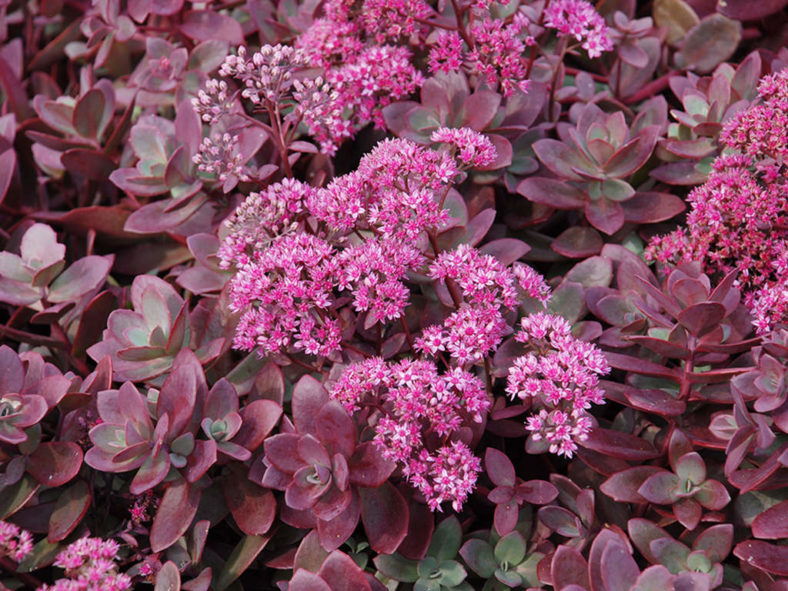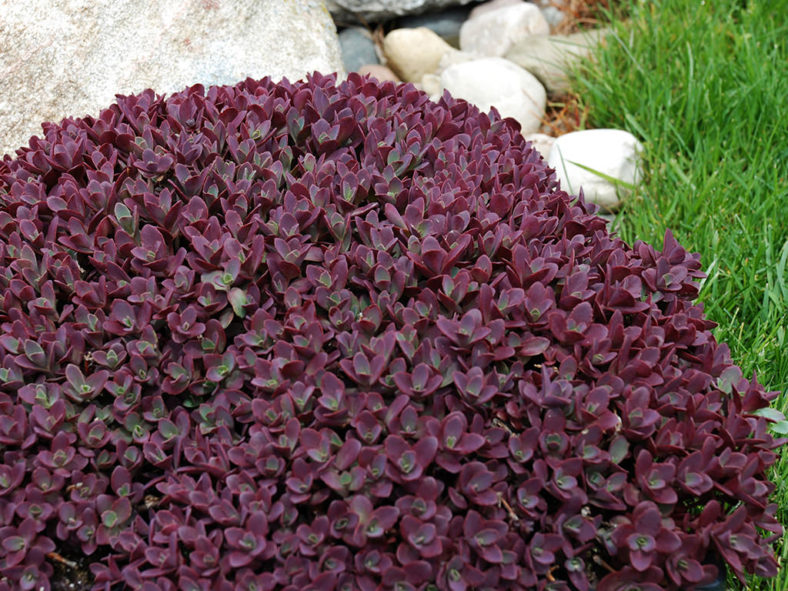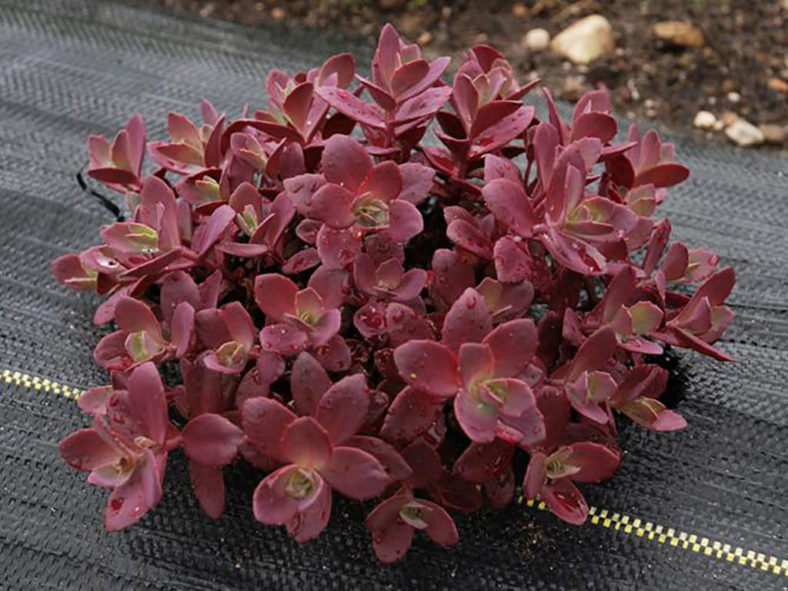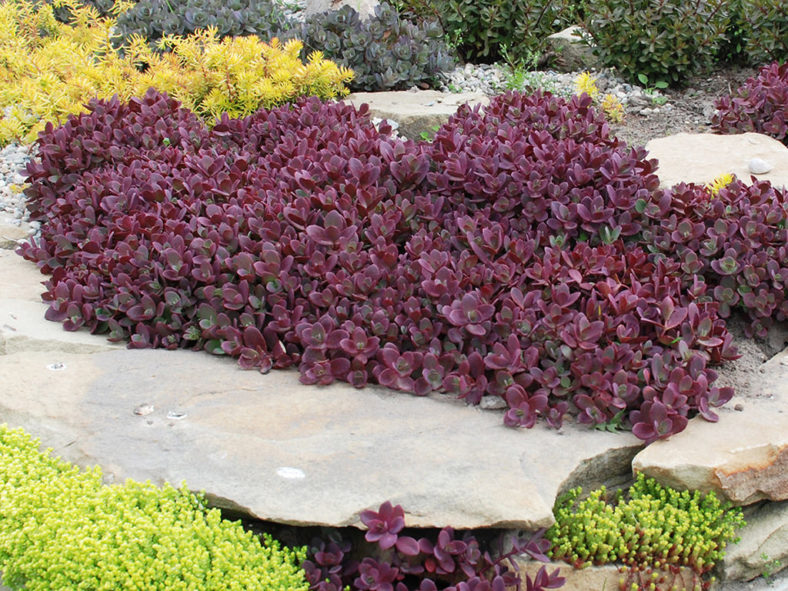Scientific Name
Hylotelephium 'Firecracker'
Synonym(s)
Hylotelephium 'Firecracker' SunSparkler®, Sedum 'Firecracker', Sedum 'Firecracker' SunSparkler®
Scientific Classification
Family: Crassulaceae
Subfamily: Sempervivoideae
Tribe: Telephieae
Genus: Hylotelephium
Origin
Hylotelephium 'Firecracker' was discovered as a single unique plant in 2010 amongst the seedlings that resulted from a cross made in the ongoing breeding program of Chris Hansen between two unnamed hybrids from his breeding program. It was introduced in 2014, patented (PP26595) in 2016 as Sedum 'Firecracker', and is a part of the inventor's registered SunSparkler® series.
Description
Hylotelephium 'Firecracker', formerly known as Sedum 'Firecracker', is a heavy branching succulent with short stems and shiny, cherry-red leaves with the color retained in spring, summer, and fall. It can reach a height of 6 inches (15 cm) and spread 18 inches (45 cm), forming a colorful and compact mound. The stems are glabrous and shiny and can grow up to 4 inches (10 cm) long and 0.4 inches (1 cm) in diameter. The leaves are usually whorled or sometimes opposite, elliptic to ovate with crenate to slightly serrated margins on the upper half. They can measure 0.7 inches (1.8 cm) long and 0.5 inches (1.3 cm) wide.
In summer, the foliage is topped with large clusters of medium pink, star-shaped flowers that remain colorful for nearly four weeks.
In winter, the foliage dies back to the ground, and new growth appears in spring. This plant is evergreen in mild climates.

How to Grow and Care for Hylotelephium 'Firecracker'
Light: This succulent prefers full sun. It tolerates light to partial shade in hot summer climates but will produce weak, floppy growth when grown in too much shade. Plant your H. 'Firecracker' in an area of your garden with 6 hours of sunlight daily.
Soil: H. 'Firecracker' does not need rich soil but requires excellent drainage. Choose a commercial potting mix for succulents, or make one yourself.
Temperature: This plant is cold-hardy and tolerant of heat and drought, making it a popular outdoor succulent. H. 'Firecracker' can withstand temperatures as low as -30 °F (-34.4 °C). USDA Plant Hardiness Zones 4a to 9b, -30 to 30 °F (-34.4 to -1.1 °C).
Watering: The best way to water H. 'Firecracker' is to use the "soak and dry" method. Get the soil completely wet, and then wait until it is dry before watering again.
Fertilizing: Feed annually with a balanced fertilizer. According to package directions, apply the fertilizer to the soil in spring as new growth appears.
Repotting: Plants in containers require little more care than those in the gardens. Repot your H. 'Firecracker' when it outgrows its current pot by moving it to a larger pot to hold the plant better. Spring is the best time to repot this plant. Make sure the soil is dry before you begin the repotting process.
Propagation: This succulent can be grown from seeds, division, or stem cuttings. Sow the seeds in spring. Dividing your H. 'Firecracker' is easy and can be carried out at almost any time in the growing season, though it is probably best done in spring or early summer. Propagate by stem cuttings in summer.
Learn more at How to Grow and Care for Hylotelephium.
Toxicity of Hylotelephium 'Firecracker'
H. 'Firecracker' can be mildly toxic to humans and animals.
Links
- Back to genus Hylotelephium
- Succupedia: Browse succulents by Scientific Name, Common Name, Genus, Family, USDA Hardiness Zone, Origin, or cacti by Genus
Photo Gallery
Click on a photo to see a larger version.


